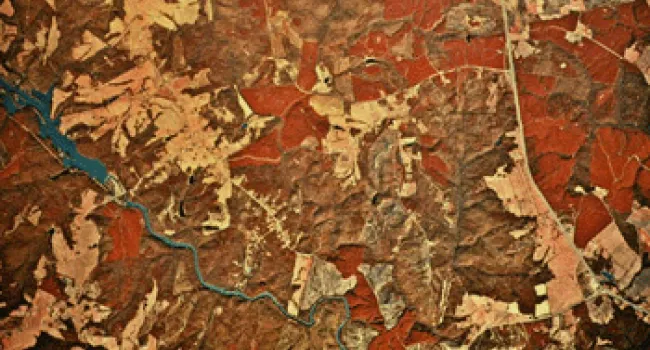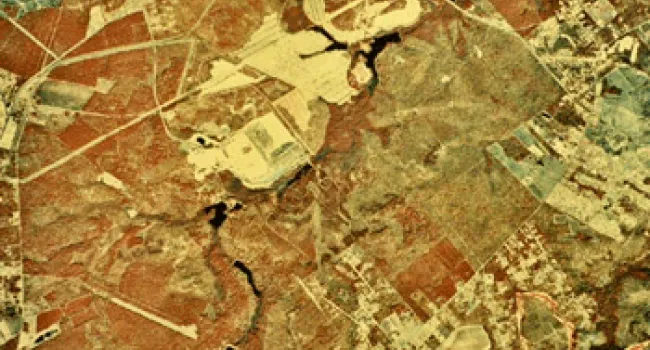
Aerial photograph courtesy of SC Dept. of Natural Resources, Map Lab
Featured Artists: Art in Park | Jimmie Dinkins | Pearl Fryar | Phil Greene | Tim Greene
Ranging from slightly hilly to flat, the Coastal Plain landform is the result of millions of years of rising and falling sea levels. The area's rural landscape is a combination of farmland, wetland, and forests with population centers are in Florence, Sumter and Orangeburg. Fishing at Lake Marion is one South Carolina's largest tourist attractions. Hydropower from Lake Marion and other lakes and rivers in the Coastal Plain greatly impact the economy and environment of the region.
Landforms
The landscape of the Coastal Plain is relatively flat, with some rolling hills occurring closer to Sandhills region. Soils consist of muds, silts, sands, sedimentary rocks and ancient marine deposits. This geological evidence from 50 million years ago reveals that much of South Carolina was once covered by the ocean. Water continues to shape the Coastal Plain in the form of meandering rivers, swamps, Carolina "bays", and other wetlands.
Vegetation
Loblolly, long leaf and slash pines dominate higher elevations of the Coastal Plain, many of these planted by the timber industry. In lower, wetter areas of the Coastal Plain, one would find white oak, sweet gum, and willow oak. In swamps and river floodplains one might find cypress, tupelo, and sweet gum.
Agriculture
Tobacco has traditionally been the cash crop of the northern Coastal Plain. Timber, cotton, corn and soybeans are important crops found throughout the entire Coastal Plain. Rivers closer to the Coastal Zone were once home to rice plantations, perhaps the most historically significant crop produced in South Carolina.
Jimmie Dinkins died in April 2023.



